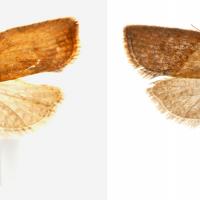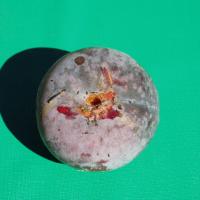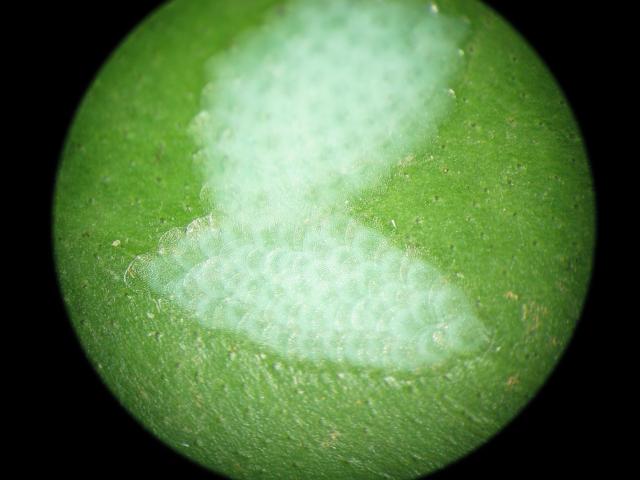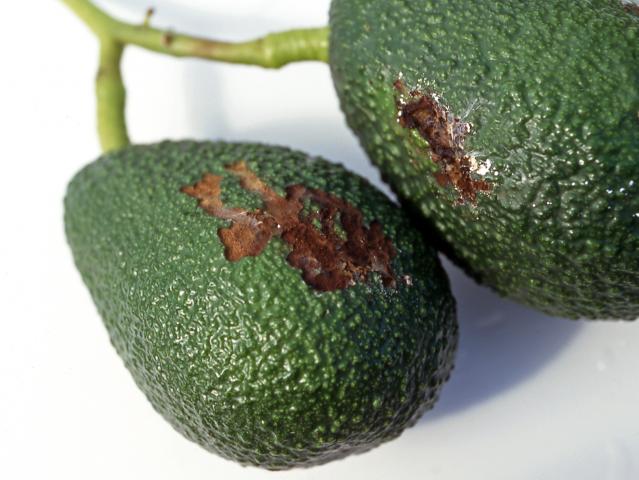Distribution and host range
The most abundant species of Epiphyas fruit moths that occur in WA are light brown apple moth, E. postvittana and 'western fruit moth' E. pulla. Both species are native to Australia and occur in WA, but light brown apple moth is regarded as native to eastern Australia and has been accidentally introduced to WA.
‘Western fruit moth’ is regarded as a native species of WA and is not known to occur in eastern Australia.
Light brown apple moth is the more widespread species in WA except for the lower south west where ‘western fruit moth’ is dominant. As well as Australia, light brown apple moth occurs in New Zealand, New Caledonia and the United Kingdom as well as in the USA in Hawaii and some western mainland states.
The pest stage is the larva. The host range is extensive but the main crops attacked include pome and stone fruit, grapevines, avocados, kiwifruit, strawberries and nursery stock. Larvae also feed on legumes, wattles and weeds such as dock, cape weed and blackberry.
Identifying apple moths
The physical characteristics of both species of moths are very similar in all life stages making it difficult to distinguish them. Pheromone lures are available that are specific to each species. To protect crops where either or both species may be present, monitoring of moths should include deploying pheromone traps for the relevant species.
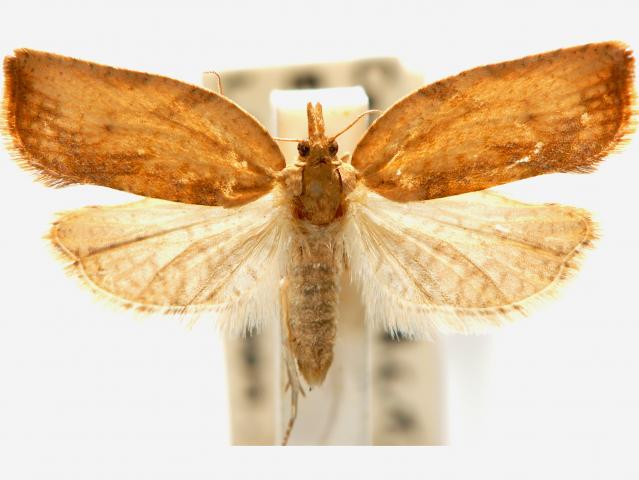
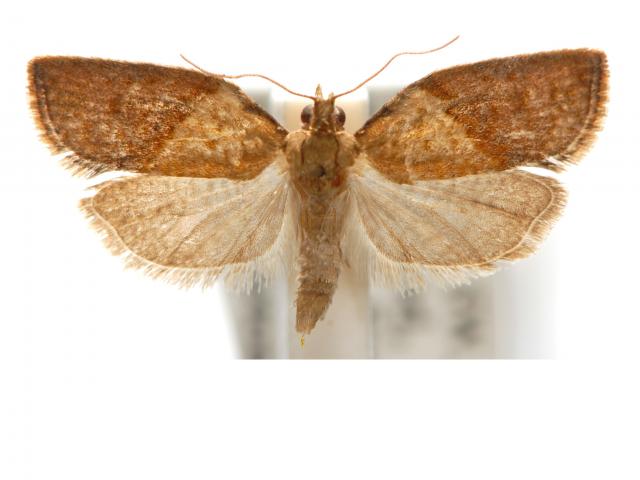
Adults are bell-shaped at rest and about 10mm long. They have a wing span of about 20mm. They are pale brown, but in males, the outer half of the forewings is dark brown. They are weak flyers and are likely to be resident within an orchard or fly in from nearby infested plants. Moths are nocturnal. The first generation emerges from pupae in early spring. There may be up to four generations per year.
Eggs are laid in an overlapping pattern in a flat mass around 5mm by 10mm. Each mass consists of between 25 and 50 eggs. They are usually laid on the upper leaf surface and usually near soft plant tissue – near the growing tip or young leaves and fruitlets. They are pale green when first laid and are cryptic on leaves. Eggs darken as they mature. If parasitised by a wasp, eggs turn black near the time of emergence.
Larvae are green with fine hairs over their body and have a pale brown head capsule. Larvae produce silk as they feed, webbing leaves or fruit together and feed within such sheltered areas. When disturbed, larvae wriggle rapidly in either direction and may suspend themselves from the plant by a silk thread. Mature larvae are about 20mm long. Winter is spent as near mature larvae.
Larvae pupate on the plant, often within the feeding shelter created by the webbing. Pupae are brown and about 10mm long.
Apple moth damage and importance as a quarantine insect
The first sign of an infestation of larvae is clumped leaves from webbing and skeletonised or dead leaf tissue. Damage to growing tips of young plants or nursery stock can adversely affect plant structure. Larvae feed on the skin or the fruit stalk in crops such as pome and stone fruit, avocados, kiwifruit and strawberries. This results in discoloured brown tissue and such fruit may be downgraded or rejected. In grapes, yield loss can occur if young berries are attacked, and larvae can spread the berry disease botrytis. Occasionally larvae bore into fruit.
Apple moths tolerate cool conditions and hot weather reduces their survival. Damage can occur from spring to autumn in temperate areas, with larvae continuing to feed into winter.
Because apple moths have a restricted international distribution, presence of larvae on produce destined for export presents a potential quarantine threat. Larvae are tolerant of low temperature and will continue to feed in cool store. Consignments of infested fruit for export will be rejected.
Monitoring and management
Apple moth eggs and larvae are difficult to detect. Even though apple moths lay relatively large egg masses, they are cryptic on foliage. Larvae feed within webbed tissue or between fruit that is touching.
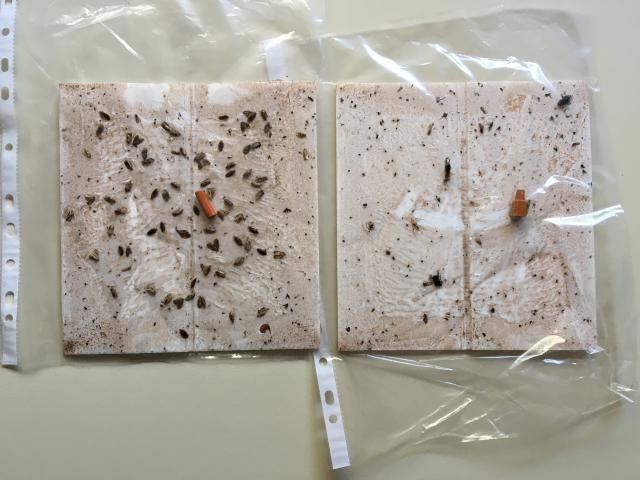
The best method for assessing the presence and abundance of apple moths is to deploy pheromone traps, with a lure placed within delta traps with a sticky base. Traps should be deployed starting at early fruit development. Separate and specific lures are available for each of the main pest species. In the photo of sticky traps above, these traps were deployed at a site in the lower south west of WA in 2019 where 'western fruit moth' was the dominant species. The traps with light brown apple moth lure caught no moths over the same trapping period. Unlike strong flying moths like heliothis (native budworm and corn earworm), apple moths are weak flyers so more than one trap per block may be required to detect their presence. Traps should be checked at least fortnightly and lures replaced every four weeks. Where consistent or large numbers of moths are caught in traps, monitor growing tips, young leaves and fruit for larvae. When 5% of tips or fruit is infested, intervention is recommended.
Limited research indicates that the mating disruption formulation used to protect plants from light brown apple moth will also help control ‘western fruit moth’.
Because they are native species, apple moths are subject to attack by a suite of natural enemies – predators and parasites. One species of egg parasite is available commercially for inundative release. The need for and timing of such a release can be based on pheromone trap catches and experience with interpretation of the trap catch in relation to timing of egg laying and air temperature on the occurrence of larvae.
A range of insecticides is registered for use against light brown apple moth and they can be found via the APVMA web site. For vineyards and deciduous fruit orchards, the list of registered insecticides as well as information on mating disruption and an egg parasite are included in the Viticulture and the Pome and Summer Fruit Orchard Spray Guides for Western Australia. Insecticides registered for use against lightbrown apple moth may be applied against ‘western fruit moth’ under pesticide Regulations administered by the Health Department of Western Australia.
Removing alternative broadleaf host plants such as clover and capeweed from the orchard floor would help reduce the abundance of this insect.
Further reading
Clark, L.R., Geier, P.W., Hughes, R.D. and Morris, R.F. 1967. The ecology of insect populations in theory and practice. Methuen, London; Barnes and Noble, New York, 1967. 246 pp.
Danthanarayana W. 1983. Population ecology of the light brown apple moth, Epiphyas postvittana (Lepidoptera: Tortricidae). Journal of Animal Ecology. 52 (1): 1-33.
Hitchcock, R. 2012. Revision of the genus Epiphyas. Ph D Thesis. Research School of Biology, College of Medicine, Biology and Environment, Australian National University. 306pp.
Paull, C. and Austin, A.D. 2006. The hymenopteran parasitoids of light brown apple moth, Epiphyas postvittana (Walker) (Lepidoptera: Tortricidae) in Australia. Australian Journal of Entomology 45: 142–156.

